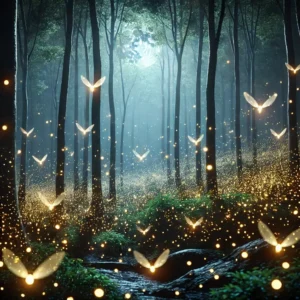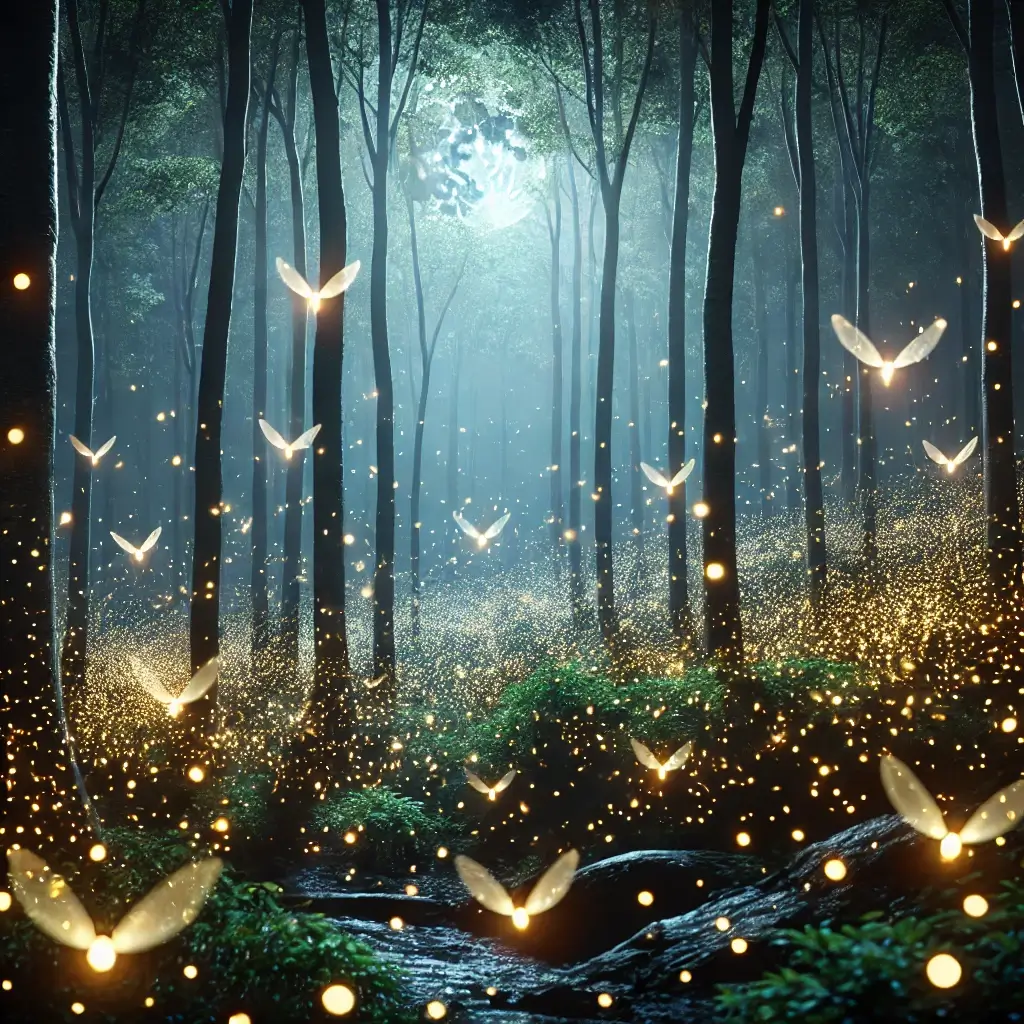Why be normal, when the weird stuff is way more interesting?

Imagine walking through a dark forest when, suddenly, hundreds of tiny lights blink in perfect unison, illuminating the night in one of nature’s most mesmerizing displays. These are synchronized fireflies, and their coordinated flashing has baffled scientists and enchanted viewers for centuries. Found in only a few locations across the globe, synchronized fireflies create a breathtaking natural spectacle. But how do they manage to flash in unison, and why? In this article, we explore the fascinating world of synchronized fireflies, how they coordinate their light shows, and where you can witness this natural phenomenon.
What Are Synchronized Fireflies?
Unlike most fireflies that blink randomly, certain species have developed the ability to synchronize their flashing patterns, creating a perfectly timed display of light. These fireflies, such as the Photinus carolinus in North America and Pteroptyx species in Southeast Asia, are known for their ability to flash in unison. Large groups of male fireflies will gather, flashing together in bursts, creating waves of light that pulse through the darkness. The effect is so mesmerizing that it often draws thousands of visitors to witness the spectacle in places like the Great Smoky Mountains in the U.S. and the riverbanks of Thailand.
Synchronized fireflies aren’t just a rare curiosity. They offer a glimpse into the incredible diversity and complexity of the natural world. Unlike typical fireflies that light up at random intervals, synchronized fireflies work together in what seems like a coordinated effort, though the exact mechanisms behind their synchronization are still not fully understood.
The Science of Synchronization: How Do They Do It?
How do synchronized fireflies manage to coordinate their flashes so perfectly, often in complete darkness? The answer lies in a process known as phase synchronization, a biological phenomenon where individuals within a group adjust their timing to match one another. In this case, fireflies adjust the rhythm of their flashing based on visual cues from their neighbors. This type of synchronization is similar to how humans clap in unison at a concert or how heart cells pulse in sync.
Phase synchronization in fireflies is a particularly fascinating area of study because it occurs without any central control. There is no “leader” in the group dictating the rhythm—each firefly acts independently, yet they all manage to match their flashes in perfect unison. Scientists have modeled this behavior mathematically, comparing it to other forms of collective synchronization seen in nature, such as the synchronized swimming of fish schools or the coordinated movement of bird flocks.
The more fireflies there are in a group, the more precise their synchronization becomes. Even though their behavior may appear effortless, it’s the result of a complex biological mechanism that helps them communicate and thrive in their environments.
Famous Locations to See Synchronized Fireflies
While synchronized fireflies are a rare sight, there are a few places in the world where their light shows are a regular event. One of the most famous locations is the Great Smoky Mountains National Park in the United States, where thousands of visitors flock each year to witness the synchronized flashing of the Photinus carolinus species. The firefly mating season usually takes place in late May to early June, when the forest is transformed into a natural light show. This event has become so popular that the park now runs a lottery system for visitors to secure viewing spots.
In Southeast Asia, particularly in Thailand, Malaysia, and the Philippines, synchronized fireflies can often be found near riverbanks, where the Pteroptyx species puts on nightly displays. In places like the Selangor River in Malaysia, fireflies light up the night as they synchronize their flashes in the mangrove trees. These locations are becoming increasingly popular for ecotourism, as visitors are drawn to the ethereal beauty of the synchronized firefly displays.
In both North America and Southeast Asia, firefly synchronization events are closely tied to environmental conditions, including temperature, humidity, and moonlight. These conditions need to be just right for the fireflies to perform their light shows, making each display a fleeting and precious sight.
The Threats Facing Synchronized Fireflies
While the sight of synchronized fireflies is mesmerizing, these species face a number of threats that could jeopardize their future. One of the biggest challenges they face is light pollution. Artificial lighting from cities, vehicles, and homes can disrupt the fireflies’ natural rhythms, making it harder for them to synchronize and communicate. This light pollution confuses fireflies, as their flashes become less visible to potential mates.
Habitat loss is another major issue. Fireflies rely on specific environments, such as forests, wetlands, and riverbanks, to thrive. Deforestation, urbanization, and agricultural expansion have destroyed many of these habitats, reducing the areas where fireflies can live and breed. Climate change also plays a role, as shifts in weather patterns can disrupt the delicate balance of temperature and humidity that fireflies need to survive.
Conservation efforts are underway in many regions to protect firefly habitats and reduce the impact of light pollution. In some places, firefly tourism is being managed sustainably to ensure that visitors can enjoy the displays without harming the environment. Organizations dedicated to firefly conservation are working to raise awareness about the importance of preserving these natural light shows for future generations.
Synchronized Fireflies in Popular Culture
The magical sight of synchronized fireflies has not only captivated scientists and nature enthusiasts but has also found its way into popular culture. These dazzling light shows have been featured in documentaries, books, and even art installations. For example, synchronized fireflies were prominently featured in the nature documentary series “Planet Earth II,” showcasing their ethereal beauty to a global audience.
The fireflies’ natural synchronization has also inspired art installations that attempt to mimic their behavior. In some cities, artists have created light shows that simulate the fireflies’ flashes, bringing the essence of their phenomenon to urban settings. These works of art serve as a reminder of the beauty and complexity of nature, and the importance of preserving it.
The Future of Synchronized Fireflies: Preserving Nature’s Light Show
Despite the challenges they face, synchronized fireflies continue to light up the night in select parts of the world. However, their future remains uncertain as human activity encroaches on their habitats. To ensure that future generations can experience the wonder of synchronized fireflies, efforts must be made to protect their environments and reduce the impact of light pollution.
Simple steps, such as turning off unnecessary outdoor lights during firefly mating season and supporting conservation initiatives, can make a big difference. Additionally, educating the public about the importance of firefly habitats can help foster a deeper appreciation for these creatures and the role they play in our ecosystems.
As we look to the future, it’s essential to remember that the beauty of synchronized fireflies is a fleeting gift from nature—one that we must work together to preserve.
Closing Thoughts: Nature’s Most Enchanting Light Show
The world of synchronized fireflies is both magical and mysterious, offering a glimpse into the wonders of nature’s design. From their incredible synchronization abilities to their role in ecosystems, fireflies remind us that even the smallest creatures can create the most spectacular displays. Whether you’re lucky enough to witness them in person or simply marvel at their mystery from afar, synchronized fireflies leave an unforgettable impression. Protecting these light shows for future generations is not just an environmental responsibility, but also a way of preserving one of nature’s most enchanting spectacles.

